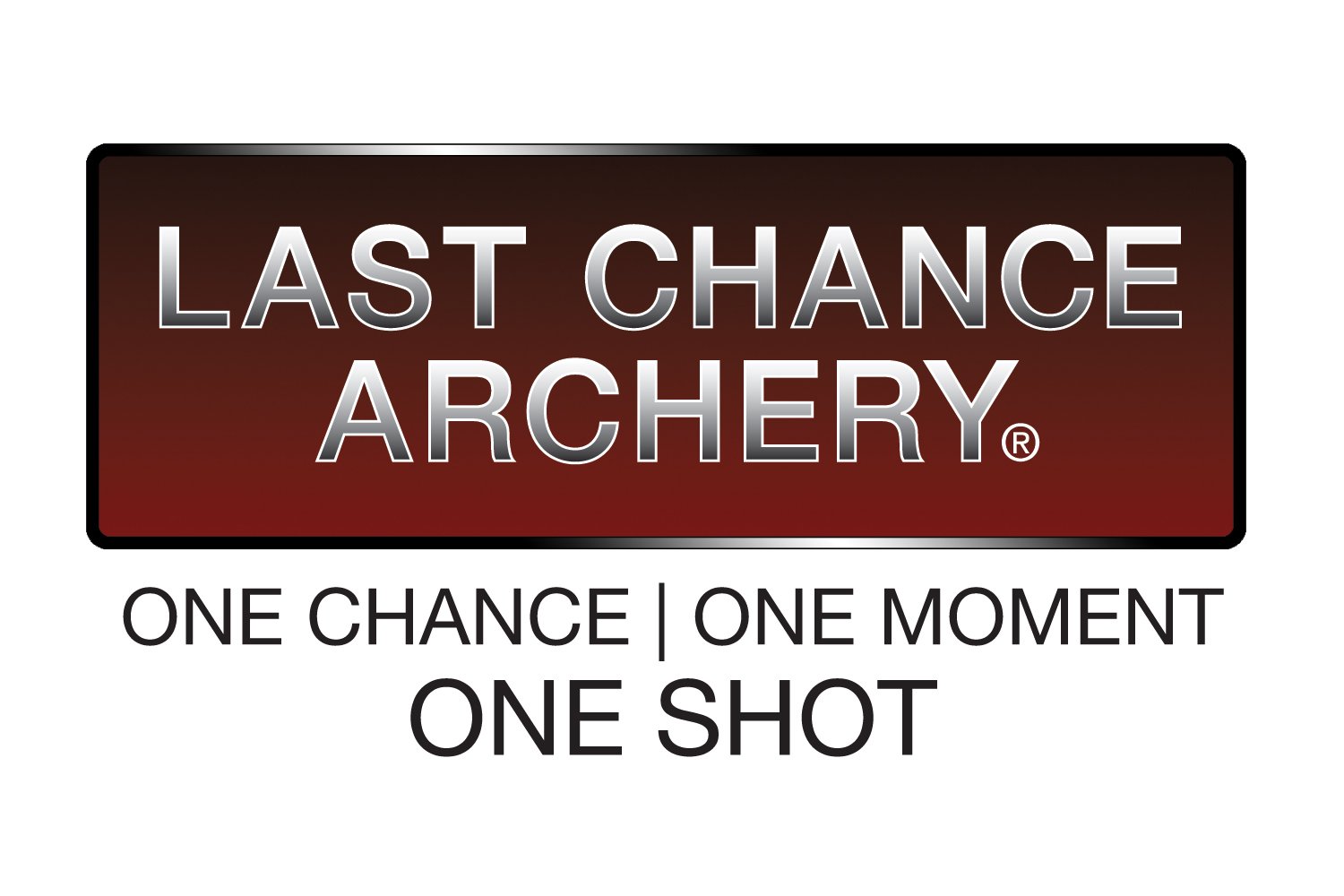"Judging yardage, the tactics, and personal skills" By Danny Evans
/Danny’s top product picks from Last Chance Archery…
“The archer learns when he forgets all about the rules of the way of the bow and goes on to act entirely on instinct.” (Paulo Coelho)
As a professional archer, I am asked frequently how I judge yardage, so I would like to take this opportunity to go through what my process is and tell you what I am looking at to successfully judge yardage. When I first walk up to the stake, I quickly glance at the target and asses the body size utilizing the skill of depth perception. After performing a quick judgement based off the target, I’m at, I then narrow it down to be plus or minus a five-yard range. For example, if it’s over 40 yards but no more than 45 yards. I then find my 20 and go mark every five to the target and see where the marks would line up. I then look around my setting to see what could potentially interfere or be a distraction that would affect the yardage judgement. This could include things like dips in the ground, distance from the tree or a log present, that could affect me not being able to see. I look at the trees in between the target and if there are any present and see what the number would be and then I compare with the other marks. If there are trees present, I will then put a tree between myself and it and ignore the rest of the target but the “butt” of the target. This personally helps me to come up with a more solid number if I am contemplating between two numbers, while also taking into consideration all the methods that I previously mentioned, I can average them together if needed.
Some of the other things that I am contemplating through my entire judging process can include the following:
· While competing at tournaments or practicing at local archery shops, while waiting for my turn to shoot, I take advantage of listening to the other shooters that are present and listen to how their bows are firing by sound judging. A good tip while doing this is to ask the other shooters what speed they are shooting at before you start your round to be successful with this technique. By doing this, you can utilize the sound of the arrow to give you a rough estimate of what the distance is before you walk up to the stake to shoot your arrow.
· I look at the distance from the lower abdomen of the target, to the ground by the feet and by doing this it allows me to be able to get a better idea of the depth perception.
· There are things you learn from experience and different things that can affect how the target would look based off size and positioning of the target. For example:
A target that sits closer to the ground or a larger target may look closer, so I tend to choose my larger number for my yardage
A lane that is tight, narrow or dark will make the target look farther away. The lighting will affect the judgement drastically.
A lane that is more open or has sunlight hitting the target will tend to make the target look closer.
Another thing to keep in mind is if there is a large tree present by the target, in front of, beside of, or back of, it tends to make the size of the target look smaller, which makes the target look farther than it is.
I tend to look at the holes that are already in the target with my binoculars and see if there’s a consistent pattern of where people may be hitting. Are they hitting low, high, or dead on and how will this affect my final decision in choosing my final yardage number?
Another judging process that I also implement from time to time when applicable is by finding your 30 yard mark and then coming back 10 yards from the target where you can see the two marks intersect and then adding or subtracting the difference to come up with a number.
· I look at the target with my bare eyes and see things such as:
How the rings are starting to fade from 20-50 yards
The difference in definition that I can see at this distance
How well can I see the facial definition from this yardage (everyone’s eyesight is different so this will vary from person to person)
A good example of this would be, let's say the target is under 30 yards. I can see all the 12/14 rings on a McKenzie target, the 11 rings on Rinehart targets, and once it hits 33 yards the bonus rings will start fading out. I can see the ten ring/core on the McKenzie's and Rinehart's pretty good up to 42 yards then it starts fading out. Once the target gets to 50 yards plus, the core starts to fade away regardless of the target. Certain lighting conditions will change this philosophy so frequently I will adjust this accordingly.
Over the years, I have learned if the target is across a draw or gully, I will judge straight to it or to a nearby tree rather than going down and back up to the target which tends to put your estimate way off. I also take into consideration my final number and factor it in on how I’m managing the course that day. If it tends to be a longer course, I may not have to be as aggressive which I will increase my number and take the higher of the two so that I make sure that I am staying within the ten ring on targets that are over 43 yards and then will try to capitalize on the ones that are under that yardage. If it tends to be a softer course, I will tend to be more aggressive with my numbers especially if I’m judging well that day.
Some of the tips that have helped me over the last 30 years are: Try to become more proficient at finding a number that is close to your average shot. For example, if your max is 50 yards, get good at being able to find 40 yards every time and that will increase your success at judging accurately. How do you get good at finding that number? Picture this, imagine that you are standing there shooting a bag target at 40 yards, and burn that image into your head. When you go to judge the 3D target, imagine throwing it out there on the ground between that target and you and see where it lands. You can then adjust accordingly by adding or subtracting yards depending on the relation to where it landed. You may also walk around the woods and try to pick spots that look 40 yards repetitively to get comfortable with what that looks like and continue to do so until you are 100% confident in finding that yardage.
When I think about what helped me the most when I first learned to be able to size up a body of a target, is by lining all of the targets up in a row out in an open area and then stand at 20 yards going through every one of those targets and get that photographic image of what those targets look like burnt into your mind. After, I would go through all my targets and advance them five yards and so on until they were all at 50 yards. This would happen several hours a day, every day for a month. I then started to feel confident on body sizing to help me quickly access an initial number. Once you get the initial number and get confident in estimating body size usually the initial number you project will be within a yard of your distinctive number.
So, what happens if you don’t have access to targets or a 3D course to practice on? Another good way to learn that doesn’t require targets is by utilizing other common objects you may have. For example, something as simple as orange cones and placing them every five yards which helps to develop that depth perception and get comfortable in doing so. You can also utilize a long rope and tie knots every five to ten yards and put a colored ribbon around the knots and walk around dragging it behind you, stopping periodically and looking back. This helps to get comfortable with depth perception and judging yardage.
I have set my targets up in lanes and one of the problems that I have noticed is that you learn the lane very quickly. I felt that this wasn’t taking full advantage of my environment for practice. I went through and cleared out the underbrush in a few acre area and set my targets back out. By doing this, it allowed me to not memorize the lanes and to get more quality practice on judging the targets and only move the targets about once a week. Another thing that allows me to judge more often on my targets without moving them is making sure I don’t range trees or objects in-between me and the target so I don’t learn the distance between them.
I carry a notebook around and take notes to look back on while judging and practicing shooting. This has helped me out tremendously because it helps to show your tendencies on every target. A good personal example would be, on the black buck target I tend to judge a yard short. By keeping notes, I know that I need to add a yard to be more successful. I’ve also learned that one side of the target judges differently than the other side. By keeping a notebook, you can see these different tendencies.
Since I shoot ASA and IBO every other week, I have learned that when I’m switching back and forth between the two targets and the different judging that takes place, I’m always 1.5 yards high on McKenzie's and 1.5 yards low on the Rinehart's. It takes time to get acclimated and back in the groove. I typically practice judging yardage four to five times a week for several hours a day. This is an individual timeframe that works for me keeping me sharp on my judging but everyone is different and may or may not require as much time.
The number one thing that I can see to judging yardage and being successful is not to second guess yourself and have 100% confidence in your original number that your gut tells you based off your intuition and skills of the game especially when you are drawing back on that target. I hope this helps to make your judging and shooting more successful. Have fun and good luck!







